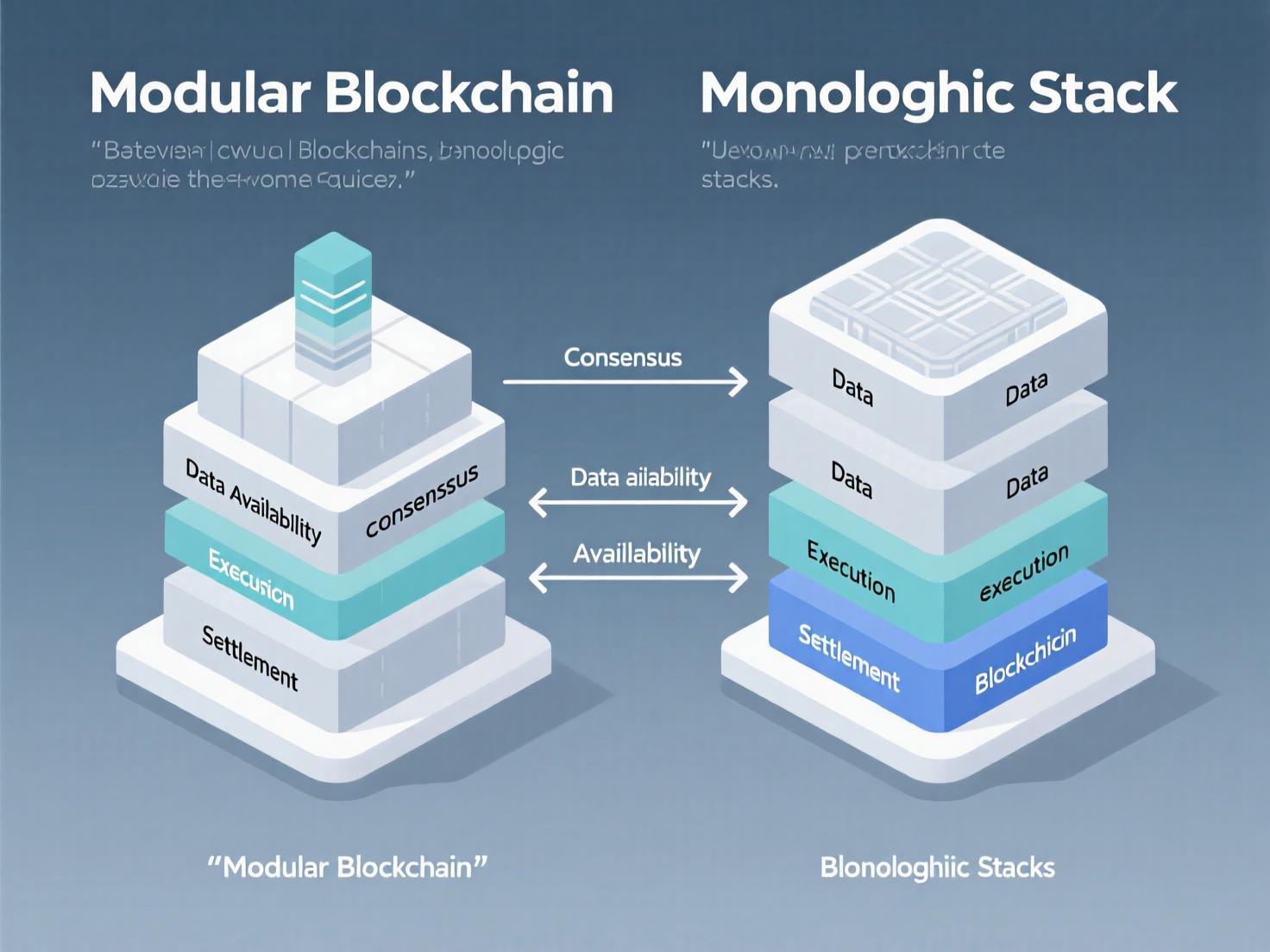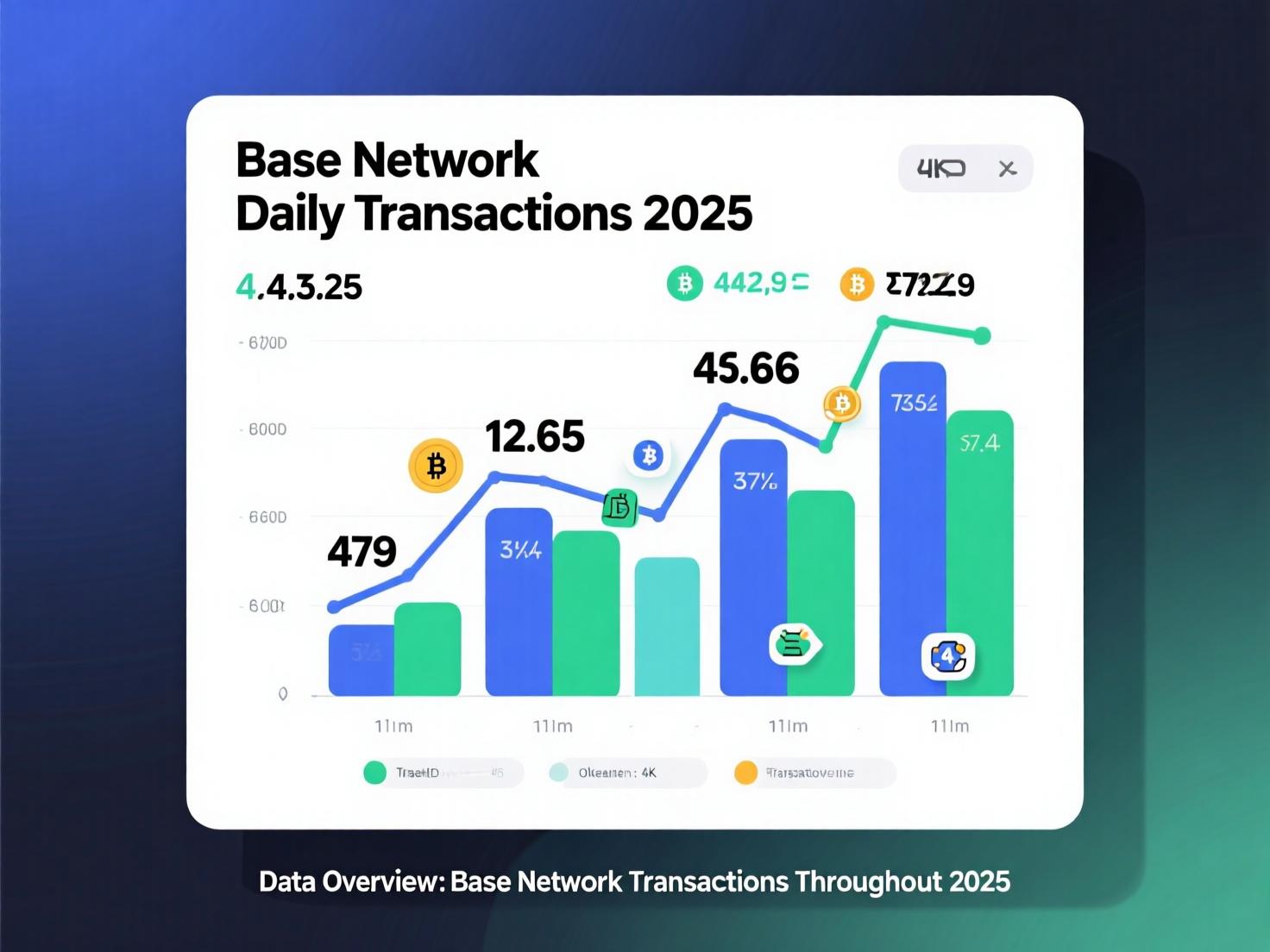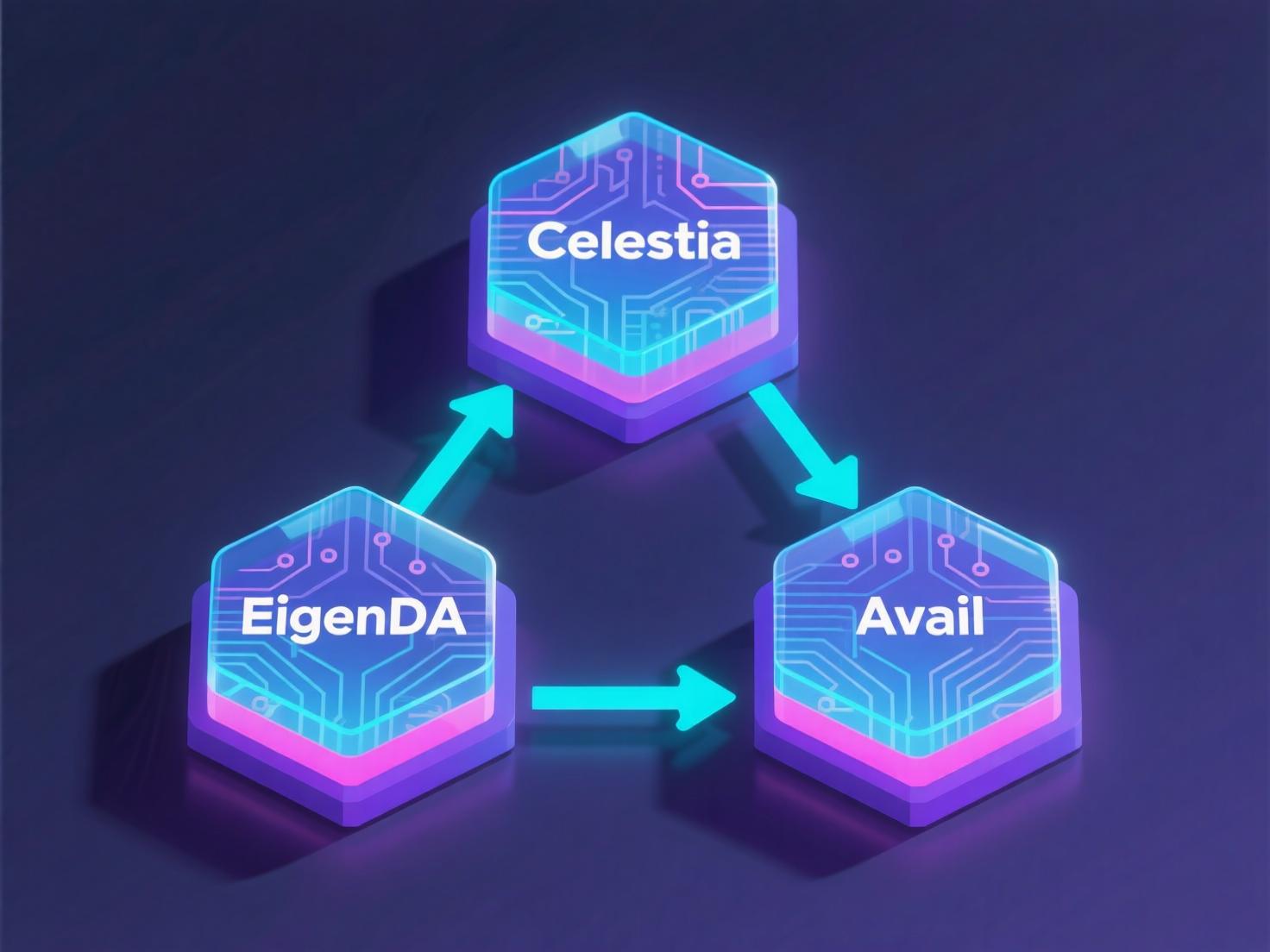The Rise Of Modular Blockchains
The blockchain stack is unbundling. Instead of one chain doing everything consensus, data availability, settlement, and execution modular blockchains distribute these responsibilities across specialized layers. This separation lets teams compose best-in-class components: choose an execution rollup, anchor security to a robust settlement layer, and outsource data availability (DA) to high-throughput networks. The result is more scalability, faster iteration, and lower costs all without abandoning decentralization. In 2025, production activity confirms the shift: rollups process millions of transactions daily, DA layers mature, and “superchains” unify multiple rollups under shared tooling and governance. This guide unpacks how modular blockchains work, where they’re gaining traction, concrete case studies, and a no-nonsense framework to choose your stack.
What Are Modular Blockchains?
A modular blockchain focuses on a subset of duties (e.g., DA + consensus) and outsources the rest (e.g., execution) to other layers. The canonical split covers four planes: consensus, data availability, execution, and settlement. Monolithic designs bundle all four; modular designs unbundle and recombine them for specific goals. Celestia popularized the DA-first approach, enabling rollups to post data to a dedicated layer with data availability sampling (DAS) instead of forcing everything through a single L1’s limits.
Modular Blockchains vs. Monolithic Chains
Monolithic chains (e.g., classic L1s) optimize for coherence and simplicity but struggle to scale without trade-offs. Modular blockchains split responsibilities so each layer can scale independently: execution environments can shard horizontally, DA layers can increase bandwidth, and settlement layers can harden security. Analysts and educators now frame Ethereum itself as a modular ecosystem with rollups and alternate DA options, while Bitcoin remains closer to monolithic by design.
Key takeaway: Modularity is not “more complex for its own sake”—it’s a deliberate response to the scalability trilemma.
The Modular Stack (At a Glance)
Execution: Rollups (OP Stack, Arbitrum Orbit, zkStack, Starknet appchains, etc.)
Data Availability (DA): Celestia (DAS + namespaces), EigenDA (restaked Ethereum security), Avail (general-purpose DA)
Settlement: Ethereum is the primary settlement home for many rollups; others use sovereign rollups with their own governance
Consensus: Provided by DA/settlement layers or dedicated validator sets
Celestia provides DA without executing smart contracts. EigenDA leverages restaking to tap Ethereum’s validator set. Avail targets horizontally scalable DA for rollups and appchains. These options anchor how modular blockchains are composed in practice.

Why Modular Blockchains Are Rising in 2025
Real usage has arrived.
L2Beat’s activity dashboard shows rollups sustaining high user operations per second (UOPS); Base, for example, peaked at ~164 UOPS on May 29, 2025, and the ecosystem’s average scaling factor vs. Ethereum L1 is double-digit. Base’s own explorer recorded 14,033,902 transactions that same day evidence of rollup-scale workloads.
Superchain momentum.
Optimism’s OP Stack–based Superchain reportedly handles ~11.5M daily transactions and over 60% of Ethereum L2 activity, with ambitions to reach 80%. Names building on OP Stack include Coinbase (Base), World Chain, and others.
Capital + security concentration.
Total value secured (TVS) across L2s is in the $45B+ range year-over-year, signaling durable economic weight on modular layers.
DA breakthroughs.
Celestia’s DAS, EigenDA’s restaked security and high throughput, and Avail’s general-purpose DA are turning DA from a bottleneck into a competitive market.
Modular Blockchains in Practice: Three Patterns
OP Stack & the Superchain
Teams launch rollups with a shared codebase (OP Stack), shared governance, and cross-rollup interoperability creating a network of rollups rather than isolated islands. This model reduces the time to market and encourages network effects: users, dev tools, and liquidity flow across the superchain.
Sovereign Rollups on DA Layers
Builders deploy execution environments (sovereign rollups) that post data to DA layers like Celestia or Avail while retaining sovereignty over upgrades and forks. This allows Ethereum-like development patterns without inheriting L1 constraints, a hallmark of modular blockchains.
Ethereum Settlement + Alt-DA
Rollups can settle on Ethereum but choose EigenDA for data availability to improve bandwidth and costs. Mantle’s EigenDA integration, for example, touts 15MB/s DA throughput vs. ~0.0625MB/s limits on Ethereum, plus a broader operator set—an enterprise-friendly path that keeps Ethereum’s security.
The DA Layer Advantage
Data availability determines whether all participants can reconstruct the rollup state. In modular blockchains, DA is externalized, enabling light clients and rollups to verify blocks without downloading everything, using techniques like DAS. Ethereum’s docs note DA is especially pivotal for rollups and light clients, informing how builders design fraud/validity proofs and data posting strategies.
Why it matters: Offloading DA de-risks execution growth. As execution demand spikes, you scale the DA rail independently rather than forking monolithic throughput.
Case Study #1: Base (Coinbase) on OP Stack
What happened: Base hit ~14M daily transactions on May 29, 2025, while consistently ranking among the highest-activity L2s.
Why it’s modular: Execution on Base benefits from shared OP Stack tooling, while settlement/security leverage Ethereum.
Impact: On-chain social, consumer apps, and microtransactions anchor to a low-fee environment exemplifying how modular blockchains drive mainstream-scale activity.
Case Study #2: Mantle Network + EigenDA
What happened: Mantle integrated EigenDA in March 2025, citing 15MB/s DA throughput and >200 operators (vs. 10 previously), with hundreds of millions in restaked security backing. mantle.xyz
Why it’s modular: Execution remains an L2, settlement on Ethereum, DA outsourced to EigenDA.
Impact: A credible path to enterprise-grade throughput without compromising Ethereum-anchored security another proof that modular blockchains are viable beyond experiments.

Trade-Offs & Risks (Reality Check)
Complexity: More moving parts (sequencers, provers, DA posting, bridges). Operations and incident response must be robust.
Interoperability & UX: Cross-rollup liquidity and identity remain fragmented (though superchain designs help).
Security Surfaces: DA committees, sequencer decentralization, and bridging assumptions add new risks.
Economic Coupling: Fees and incentives span multiple layers; misaligned tokenomics can blunt adoption.
Authoritative research and platform docs emphasize these nuances modularity is powerful but not a free lunch.
How to Choose Your Modular Stack (Practical “How-To”)
Define constraints:
TPS targets, latency, fee ceiling, and data footprint.
Pick settlement/security first:
Ethereum settlement offers liquidity/credibility; sovereign rollups trade that for flexibility.
Select a DA layer:
Compare Celestia (DAS, namespaces), EigenDA (restaked ETH security, high throughput), Avail (general-purpose DA and full-stack roadmap). Map bandwidth and costs to your workloads.
Choose your execution stack:
OP Stack (EVM, superchain), Arbitrum Orbit (customization), zkStack (validity proofs), Starknet appchains (Cairo).
Plan interoperability:
Bridge design, shared sequencing, or superchain membership.
Budget observability & ops:
DA posting monitors, fraud/validity proof health, incident runbooks.
Pilot, then graduate:
Start with testnets and low-risk use cases; scale once DA and settlement costs are predictable.
From Clusters to Composability
Celestia frames “clusters of chains” that communicate with trust-minimized guarantees (fraud/validity proofs). Expect clusters superchains, sovereign rollup hubs, and appchain networks to connect via standardized bridging and shared sequencing, making modular blockchains feel seamless to end users.

Concluding Remarks
The unbundling thesis has moved from whiteboards to production. Rollups rival L1 throughput, DA layers turn bottlenecks into markets, and superchains align incentives across many execution environments. Teams that embrace modular blockchains can align performance and cost with user needs without abandoning credible neutrality. If you’re architecting a new network or scaling an app, now is the time to pilot a modular path.
CTA: Want a tailored stack plan? Book a 30-minute architecture review. We’ll map workloads to DA/settlement options and deliver a concrete launch roadmap.
Frequently Asked Questions
1) How do modular blockchains differ from monolithic chains?
A . Modular designs split duties execution, settlement, consensus, and data availability across specialized layers. Monolithic chains bundle everything on one chain, which simplifies design but limits scaling. Modular stacks let teams swap components (e.g., DA layers) to match performance and cost targets.
2) How does a data availability layer work?
A . DA layers ensure transaction data is published and retrievable so light clients and rollups can verify state. Techniques such as data availability sampling (DAS) allow nodes to check data without downloading it all, unlocking high throughput at lower costs.
3) How can I choose between Celestia, EigenDA, and Avail?
A . Evaluate bandwidth needs, security assumptions, and settlement preference. Celestia emphasizes DAS and namespaces; EigenDA leverages Ethereum restaking for high throughput; Avail targets general-purpose DA and a full-stack roadmap. Run a pilot to benchmark fees and latency.
4) What is the Optimism Superchain?
A . It’s a collective of OP Stack rollups sharing tech and governance, aiming for unified user/developer experiences. Public statements cite ~11.5M daily tx and >60% share of L2 activity in 2025.
5) How do modular blockchains improve costs?
A . By offloading DA to purpose-built layers and keeping execution lightweight, fees drop dramatically versus pushing everything through a congested L1. DA markets introduce price competition rather than single-chain bottlenecks.
6) How secure are rollups that use external DA?
A . Security depends on settlement, DA assumptions, and proof systems. Restaked DA (EigenDA) inherits Ethereum’s validator incentives; DAS-based DA (Celestia) focuses on probabilistic guarantees. Assess operator sets, censorship resistance, and bridge security.
7) What’s a sovereign rollup?
A . An execution environment posting data to a DA layer while maintaining its own social consensus for upgrades. It’s independent (no L1 settlement by default), trading off immediate access to L1 liquidity for sovereignty.
8) How fast are modular stacks today?
A . Examples include Base hitting ~14M daily transactions (May 29, 2025) and ecosystem averages showing significant scaling vs. L1. Real-world throughput varies by sequencer design, block times, and DA bandwidth.
9) How can enterprises adopt modular blockchains safely?
A . Start with a controlled pilot: define SLOs, choose Ethereum settlement plus a DA layer with auditability, integrate observability for DA posting, and set incident runbooks. Scale after fee/latency stability is proven.


